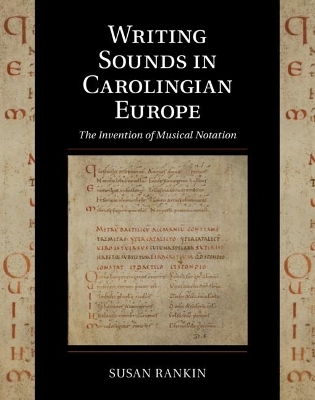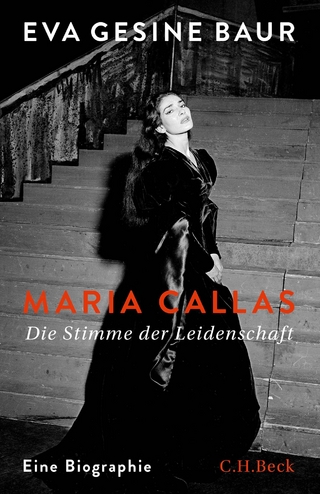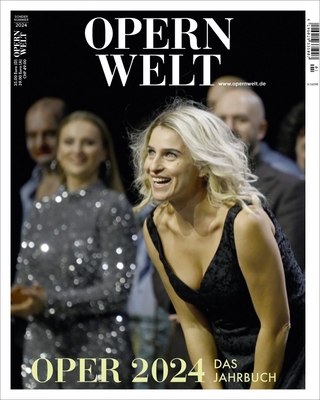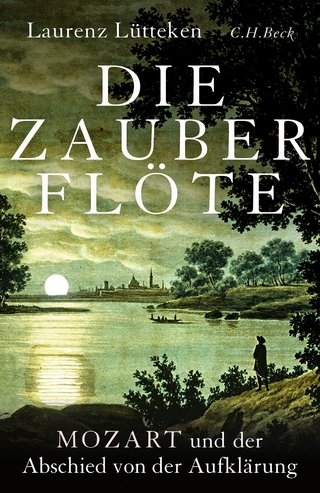
Writing Sounds in Carolingian Europe
Cambridge University Press (Verlag)
978-1-108-42140-9 (ISBN)
Musical notation has not always existed: in the West, musical traditions have often depended on transmission from mouth to ear, and ear to mouth. Although the Ancient Greeks had a form of musical notation, it was not passed on to the medieval Latin West. This comprehensive study investigates the breadth of use of musical notation in Carolingian Europe, including many examples previously unknown in studies of notation, to deliver a crucial foundational model for the understanding of later Western notations. An overview of the study of neumatic notations from the French monastic scholar Dom Jean Mabillon (1632–1707) up to the present day precedes an examination of the function and potential of writing in support of a musical practice which continued to depend on trained memory. Later chapters examine passages of notation to reveal those ways in which scripts were shaped by contemporary rationalizations of musical sound. Finally, the new scripts are situated in the cultural and social contexts in which they emerged.
Susan Rankin is Professor of Medieval Music at the University of Cambridge, Fellow of Emmanuel College and a Fellow of the British Academy. Professor Rankin's published works include The Music of the Medieval Liturgical Drama in France and England, 2 vols (1989), and Music in the Medieval English Liturgy: Plainsong and Mediæval Music Society Centennial Essays (1992), co-edited with David Hilley. She has also edited The Winchester Troper: Introduction and Facsimile, Early English Church Music 50 (2007), and with Wulf Arlt, Stiftsbibliothek Sankt Gallen Codices 484 and 381, 3 vols (1996). Professor Rankin has published numerous journal articles and book chapters on medieval music, its manuscripts and notations, and on ritual.
Part I. Musical Literacy: 1. Writing music; 2. Palaeographical study of neumatic notations (from 1681 to the present); 3. Music notations 800-900: the evidence; Part II. Music Scripts: 4. Graphic techniques and strategies; 5. Frankish scripts; 6. Lotharingian and Breton scripts; 7. Palaeofrankish script; 8. Music scripts: conclusions; Part III. Writing Sound: 9. Signs and meaning; 10. Writing music: accents; 11. The Carolingian invention of music writing.
| Erscheinungsdatum | 08.11.2018 |
|---|---|
| Reihe/Serie | Cambridge Studies in Palaeography and Codicology |
| Zusatzinfo | Worked examples or Exercises; 75 Printed music items; 14 Tables, black and white; 41 Halftones, black and white; 1 Line drawings, black and white |
| Verlagsort | Cambridge |
| Sprache | englisch |
| Maße | 225 x 284 mm |
| Gewicht | 1420 g |
| Themenwelt | Kunst / Musik / Theater ► Musik ► Klassik / Oper / Musical |
| Kunst / Musik / Theater ► Musik ► Musiktheorie / Musiklehre | |
| Geisteswissenschaften ► Sprach- / Literaturwissenschaft ► Anglistik / Amerikanistik | |
| Geisteswissenschaften ► Sprach- / Literaturwissenschaft ► Literaturwissenschaft | |
| ISBN-10 | 1-108-42140-7 / 1108421407 |
| ISBN-13 | 978-1-108-42140-9 / 9781108421409 |
| Zustand | Neuware |
| Informationen gemäß Produktsicherheitsverordnung (GPSR) | |
| Haben Sie eine Frage zum Produkt? |
aus dem Bereich


